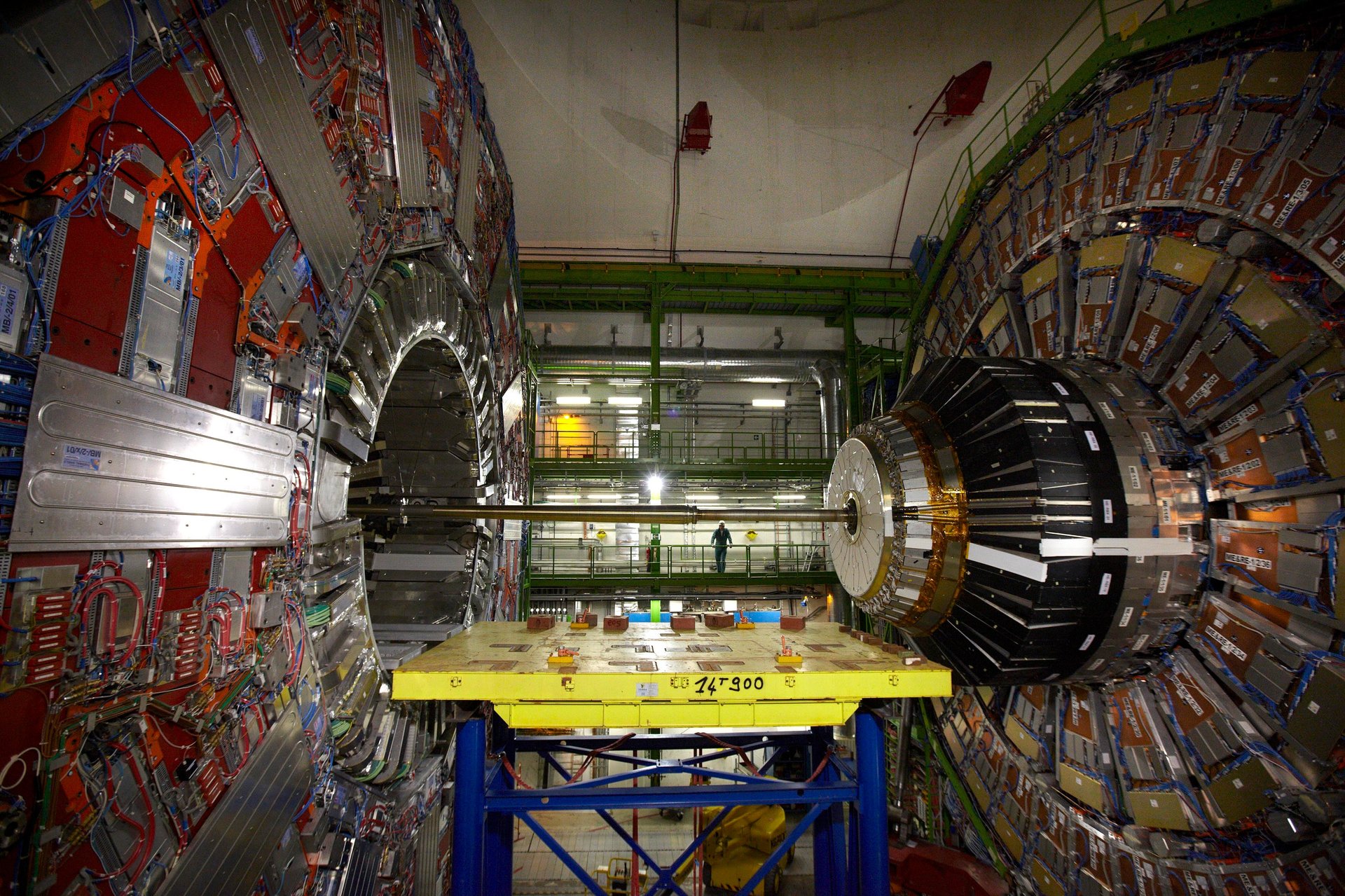The world’s largest science experiment is about to be restarted
This article has been updated.


This article has been updated.
Before it shut down in 2013, the Large Hadron Collider (LHC) became famous for helping discover the elusive Higgs boson, a fundamental—that is, indivisible—particle which gives other fundamental particles their mass through a complicated mechanism. The find earned two of the physicists who thought up the mechanism in 1964, Peter Higgs and Francois Englert, a Nobel Prize in that year.
Now, two years later, the world’s single largest science experiment is about to be restarted. (The planned restart in the week of March 23 had to be delayed because of an electrical failure.) Though the LHC fulfilled one of its more significant goals by finding the Higgs boson, its purpose is far from complete. In its new avatar, the machine boasts of the energy and technical agility necessary to answer questions that current theories of physics are struggling to make sense of.
As Tara Shears, a particle physicist at the University of Liverpool, told Nature, “In the first run we had a very strong theoretical steer to look for the Higgs boson. This time we don’t have any signposts that are quite so clear.”
Breaking new ground
The LHC works by using powerful electric currents and magnetic fields to accelerate two beams of protons in opposite directions, within a 27-km ring, to almost the speed of light and then colliding them head-on. The result is fireworks of high-energy particles which can include the most rare, short-lived particles brought into existence. These promptly devolve into lighter, more common particles, but hopefully not before particle detectors straddling the ring at four points record these collisions and their effects for study.
So, to boost its performance, upgrades to the LHC were of two kinds: increasing the collision energy inside the ring and increasing the detectors’ abilities to track more numerous and more powerful collisions.
The collision energy has been doubled in its second life. The frequency of collisions has also been doubled from one set every 50 nanoseconds (billionth of a second) to one every 25 nanoseconds. Steve Myers, CERN’s director for accelerators and technology, said in December 2012, “More intense beams mean more collisions and a better chance of observing rare phenomena.”
The detectors have received new sensors, neutron shields to protect from radiation damage, cooling systems and superconducting cables. An improved fail-safe system has also been installed to forestall accidents, such as the one in 2008 when failing to cool a magnet led to a shut-down for eight months.
In all, the upgrades cost approximately $149 million, and will increase CERN’s electricity bill by 20% to $65 million. Going ahead, these new specifications will be leveraged to tackle some of the more outstanding issues in fundamental physics.
As Alice Bean, a particle physicist who has worked with the LHC, said, “A whole new energy region will be waiting for us to discover something.”
Seeking supersymmetry
The finding of the Higgs boson laid to rest speculations of whether such a particle existed and what its properties could be, and validated the currently reigning set of theories that describe how various fundamental particles interact. This is called the Standard Model, and it has been successful in predicting the dynamics of those interactions.
But having assimilated all this knowledge, what physicists want to desperately find out is why particles’ properties have the values they do. Their quest may reveal signs of supersymmetry, a theory which predicts that known fundamental particles have heavier partners with complementary properties.
This is exciting because supersymmetry may explain dark matter, a mysterious substance which is five times as abundant as all the matter made from the periodic table of elements. That is because physicists predict dark matter to be made of neutralinos, a supersymmetric particle.